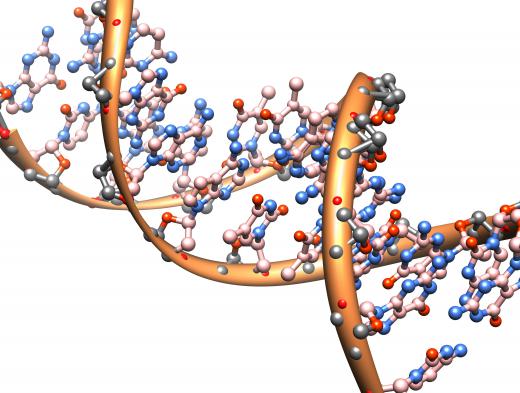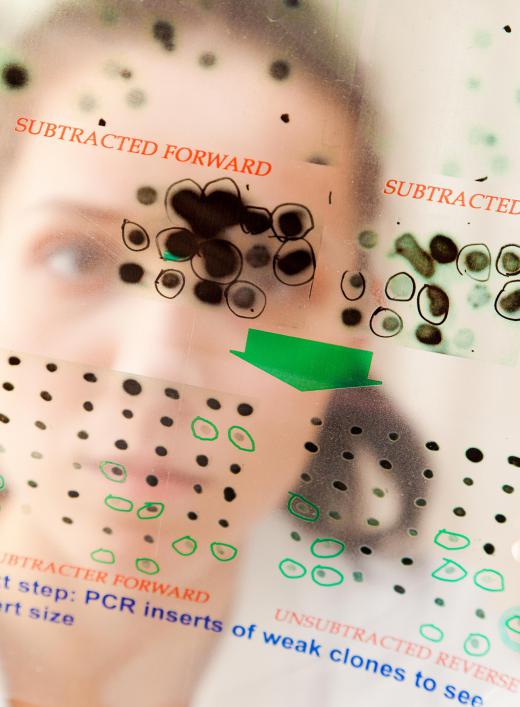What is the Genetic Code?
The genetic code is a set of instructions for transferring genetic data stored in the form of DNA or RNA into proteins. Proteins are integral to almost all of the biological processes that occur in living things. They are made up of amino acid sequences, and amino acids are produced based on the sequence of the genetic code. This biological method of information storage, then, is among the most important topics in modern biology.
DNA and RNA — the nucleic acids that contain genetic information — are composed of nucleotides, specialized molecules that, in certain orders, code for the production of proteins. Certain combinations of three nucleotides, also known as tri-nucleotide sequences, are called codons. Each codon contains the code for a single amino acid. The nucleotide sequence Adenine-Uracil-Adenine, for example, codes for the amino acid Isoleucine.

There are several steps involved in the synthesis of proteins based on the templates in the code. Transcription and translation are the two most important. In transcription, the genetic information on DNA is transferred to RNA, which is then moved to the site of translation. In translation, the RNA is decoded, allowing for the synthesis of proteins.

In RNA, 64 nucleotide triplets, or codons, make up the genetic code, though there are only 20 standard amino acids. This means that there is some overlap; some different codons code for the same amino acids. Some special codons are known as "start" and "stop" codons, and they tell specialized proteins when to begin and when to end the transcription and translation processes.

The code is extremely important for its role in passing genetic data down through generations. Each parent's genome, the summation of his or her genetic information, is contained in the DNA. The DNA of each parent is replicated, then the two genomes are combined in the offspring. The genetic information of the genome is primarily stored in the genetic code as triplets of nucleotides.

Not all of the nucleotides in DNA form into codons. There are some non-coding sections of DNA known as introns that are spliced out of the genetic information and not used for the production of proteins. Introns vary greatly in size and frequency, but almost all living things have them. For quite some time, they were thought to have no purpose. Scientists are, however, searching for answers about the reason for the presence of introns as new technologies allow for deeper study into the realm of genetics.
AS FEATURED ON:
AS FEATURED ON:















Discussion Comments
We know that a genetic code transfers from one generation to another. So I want to ask is there anything like that if a person also transfers its lifetime event memories to its offspring. If yes, then is it possible to see the past from this genetic coding?
@Qohe1et
I think that this is a very far-out but interesting point. At this time, the exact interaction that genetic code has with certain traits and functions is not yet fully understood. As far as we understand, however, this code is much more complex than any computer code we have yet constructed.
As far as "playing God" goes, that would be an entirely different discussion, with various theological, philosophical, and moral issues needing to be taken into account.
I wonder if DNA and RNA code could be translatable into binary computer code. If so, perhaps we could one day build computer "genetics" which would define the role and function of each individual machine, thereby "playing God."
Post your comments